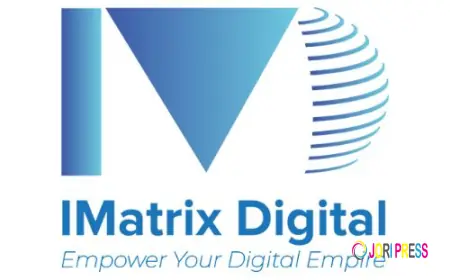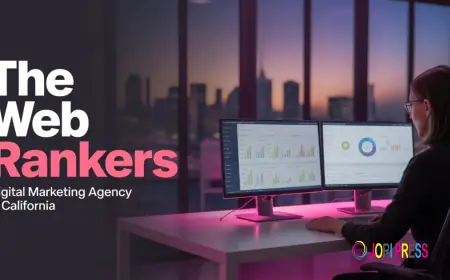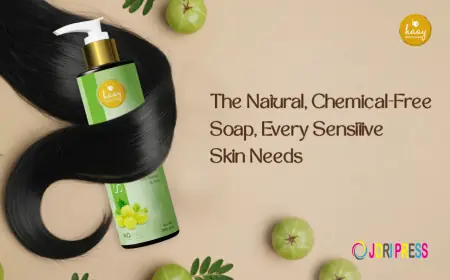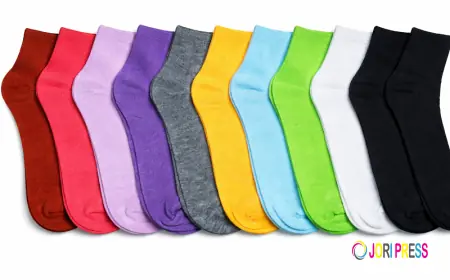United States Dishwashing Detergent Market to Reach New Heights
The U.S. dishwashing detergent market is growing due to rising hygiene awareness, dishwasher adoption, demand for eco-friendly products, and innovations in concentrated, skin-safe, and multi-functional cleaning formulations.
Industry Overview
According to the TechSci Research report titled “United States Dishwashing Detergent Market – By Region, Competition Forecast & Opportunities, 2020–2030F”, the United States Dishwashing Detergent Market was valued at USD 3,409.36 million in 2024 and is projected to reach USD 5,059.42 million by 2030, growing at a CAGR of 6.8% during the forecast period. The market is undergoing a transformation, shaped by post-pandemic lifestyle adjustments, sustainability concerns, and evolving consumer habits.
Dishwashing detergents—both for machine and handwashing use—have become essential household products. Their utility goes beyond cleaning; they now reflect consumer preferences around safety, eco-consciousness, convenience, and innovation. With rising hygiene standards and increasing adoption of automatic dishwashers in U.S. households, the demand for efficient, user-friendly, and environmentally responsible detergents has surged.
Industry Key Highlights
-
Market Size (2024): USD 3.41 Billion
-
Forecast Size (2030): USD 5.06 Billion
-
CAGR (2025–2030): 6.8%
-
Fastest-Growing Distribution Channel: Online retail
-
Fastest-Growing Region: Western United States (California, Oregon, Washington)
-
Major Players: Procter & Gamble, Unilever, Reckitt Benckiser, Colgate-Palmolive, Blueland
Download Free Sample Report - https://www.techsciresearch.com/sample-report.aspx?cid=28704
Key Market Drivers
1. Heightened Emphasis on Hygiene and Cleanliness Post-Pandemic
Following the COVID-19 pandemic, consumers have become significantly more hygiene-conscious. This behavioral shift has translated into:
-
Increased frequency of dishwashing
-
Demand for stronger, antibacterial formulations
-
Higher usage of machine dishwashers and complementary detergents
The need for reassurance in cleanliness continues to drive households toward purchasing high-performance detergents that ensure germ-free surfaces.
2. Rise in Dishwasher Ownership and Usage
As automatic dishwashers become increasingly commonplace—particularly in urban and suburban areas—consumers are seeking specialized detergents designed for machine use. These include:
-
Pod-based detergents
-
Rinse aids
-
Multi-action tablets (cleaning, deodorizing, anti-scaling)
Dishwasher ownership is especially high in newer housing developments, contributing to a steady demand for compatible cleaning products.
3. Technological Innovation in Product Formulations
Consumers expect more from their cleaning products. Innovations in the sector include:
-
Concentrated liquids and pods for reduced water use
-
Enzyme-based formulations for heavy grease removal
-
Biodegradable and phosphate-free options to reduce environmental harm
-
Dermatologically tested products for sensitive skin
These advanced formulations not only improve cleaning performance but also appeal to health- and eco-conscious consumers.
4. Rising Demand for Eco-Friendly and Skin-Safe Products
As concerns over chemical exposure grow—especially among families with children—consumers are opting for:
-
Non-toxic, fragrance-free detergents
-
Plant-based surfactants
-
Allergen-free and hypoallergenic products
-
Products with transparent labeling and third-party certifications (USDA BioPreferred, EPA Safer Choice)
This demand is driving manufacturers to invest in safer, more natural alternatives without compromising on effectiveness.
5. Customization and Subscription Models
Personalized product offerings and direct-to-consumer (DTC) models have gained momentum. These include:
-
Detergent bundles tailored to household size or usage habits
-
Subscription boxes with flexible delivery cycles
-
Scent and packaging customization
-
Sustainable refill systems (e.g., reusable bottles, dissolvable tablets)
These models enhance customer retention, brand loyalty, and provide manufacturers with valuable consumer data.

Emerging Trends
1. Surge in Online Retail for Household Essentials
Online platforms like Amazon, Walmart.com, and Target.com have become primary channels for purchasing dishwashing detergents. Key benefits driving this trend include:
-
Doorstep delivery
-
Easy price and product comparisons
-
Subscription and auto-delivery features
-
Access to specialty brands and product variants not found in stores
Online retail has democratized market access for emerging eco-brands, enabling them to compete effectively with legacy players through storytelling, influencer partnerships, and targeted advertising.
2. Growth of Plant-Based and Zero-Waste Brands
Brands such as Blueland, Dropps, and Ecos are capitalizing on the sustainability movement by offering:
-
Refillable packaging
-
Compostable wrappers
-
Minimalistic, zero-waste logistics
-
Non-plastic pods or tablet-based solutions
Consumers—especially younger demographics—are actively seeking such alternatives, even at a premium.
3. Regulatory Push Toward Greener Chemistry
State-level legislation, especially in California, is enforcing stricter guidelines on:
-
Use of phosphates and surfactants
-
Biodegradability of chemicals
-
Packaging recyclability and labeling transparency
These regulations, while increasing compliance costs, also present opportunities for differentiation and brand positioning.
4. Personalization, AI Recommendations, and DTC Loyalty Programs
Digital-first platforms offer:
-
AI-driven product recommendations
-
Replenishment reminders based on usage
-
Loyalty programs and early access to new launches
This enhances customer experience and strengthens engagement, particularly in younger, tech-savvy households.
Market Challenges
1. Rising Cost of Raw Materials
The cost of key ingredients such as:
-
Surfactants
-
Enzymes
-
Natural additives (like citrus oils or coconut-derived compounds)
has surged, squeezing profit margins. Supply chain disruptions and geopolitical factors further complicate cost predictability.
2. Brand Saturation and Low Switching Behavior
The market is highly saturated with both domestic and global players. Brand loyalty remains strong in the dishwashing category due to:
-
Product familiarity
-
Promotional bundling
-
Retail placement advantages
This creates significant entry barriers for new players trying to capture mindshare.
3. Compliance Costs for Green Labeling and Safety Testing
Certifications like EPA Safer Choice, USDA Organic, or Leaping Bunny come with additional compliance costs—testing, audit, reformulation, and labeling—which may not be financially viable for smaller manufacturers.
4. Inequitable Access to Premium or Green Products
Eco-friendly, allergen-free, or subscription-based products are often priced higher and primarily accessible online. Low-income households or those without digital access may continue relying on conventional products available at local retail chains.
Segmentation Analysis
By Product Type
-
Machine Dishwashing Detergents (fastest-growing segment): Includes pods, gels, tablets, and rinses designed for dishwasher usage. Consumers value efficiency, convenience, and reduced water usage.
-
Hand Dishwashing Detergents: Traditional liquid soaps and gels remain dominant in households without dishwashers. Increasingly, these are being reformulated to be more skin-friendly and eco-conscious.
-
Others: Includes dishwasher cleaning agents, rinse aids, and specialty products for delicate kitchenware.
By Distribution Channel
-
Online Retail (Fastest Growing): Features platforms like Amazon, niche eco-stores, and DTC websites. Subscription services and digital promotions are accelerating this channel’s growth.
-
Offline Channels: Includes supermarkets, hypermarkets, drugstores, and dollar stores. Still holds a significant share due to impulse purchases and promotional pricing.
By Region
West (Fastest-Growing Region)
Key reasons for accelerated growth include:
-
High dishwasher ownership
-
Strong eco-consumer segment
-
Supportive regulations in California, Oregon, and Washington
-
Digital-first lifestyle habits driving DTC and online adoption
-
Preference for local, sustainable brands
Other prominent regions like the Midwest and South also contribute significantly due to larger household sizes and increasing dishwasher installations in new housing.
Competitive Landscape
The U.S. dishwashing detergent market comprises a blend of multinational conglomerates, mid-tier private brands, and disruptive eco-innovators.
Key Market Players
| Company | Competitive Advantage |
|---|---|
| The Procter & Gamble Company | Market leader with iconic brands like Dawn and Cascade. Strong presence in both machine and hand dishwashing segments. |
| Reckitt Benckiser Group plc | Offers Finish (automatic) and Lysol-branded liquid detergents. Known for aggressive marketing and widespread retail presence. |
| Colgate-Palmolive Company | Popular for Palmolive line; strong offline distribution. |
| Henkel AG & Co. KGaA | Offers Persil and Pril brands. Focus on innovation and European-style product formulations. |
| Unilever PLC | Known for Sunlight and Seventh Generation (sustainability-focused). Appeals to eco-conscious households. |
| Miele & Cie. KG | Premium segment for dishwashers and corresponding detergents. |
| Dropps | DTC disruptor. Subscription-based, zero-waste pod solutions. |
| Blueland, Inc. | Known for refillable tablets and reusable bottles. Popular among millennials and Gen Z. |
| Ecolab Inc. | Industrial and commercial market leader, especially in food service and hospitality. |
| S.C. Johnson & Son, Inc. | Offers Scrubbing Bubbles and eco-friendly solutions. Invests in chemical transparency. |
Future Outlook (2025–2030F)
Short-Term Growth (2025–2027)
-
Accelerated e-commerce penetration
-
Brand diversification with limited-edition scents and seasonal collections
-
Strategic partnerships between detergent companies and appliance manufacturers
Mid to Long-Term Growth (2028–2030)
-
Rise in AI-driven auto-replenishment ecosystems
-
Mainstreaming of refillable systems and reusable packaging
-
Greater regulation mandating environmental safety compliance
-
Broader access to premium detergents through private label partnerships in retail
10 Benefits of This Research Report
-
Detailed market sizing and CAGR projections through 2030
-
In-depth segmentation by product, channel, and region
-
Insights into post-pandemic consumer hygiene behavior
-
Comprehensive view of e-commerce and subscription trends
-
Competitive analysis of top global and niche brands
-
Identification of regulatory drivers in product reformulation
-
Strategic insights for DTC and eco-focused market entry
-
Analysis of ingredient innovations and cost impact
-
Region-wise performance benchmarking and potential hot zones
-
Actionable recommendations for manufacturers, marketers, and retailers
The United States Dishwashing Detergent Market is poised for steady and sustainable growth. While traditional drivers such as hygiene and convenience continue to support baseline demand, emerging factors like personalization, sustainability, and digital retail transformation are redefining the playing field. Brands that can strike the right balance between efficacy, safety, affordability, and environmental stewardship will stand to gain the most in a competitive yet opportunity-rich market.
Contact Us-
TechSci Research LLC
420 Lexington Avenue, Suite 300,
New York, United States- 10170
M: +13322586602
Website: www.techsciresearch.com
What's Your Reaction?
 Like
0
Like
0
 Dislike
0
Dislike
0
 Love
0
Love
0
 Funny
0
Funny
0
 Angry
0
Angry
0
 Sad
0
Sad
0
 Wow
0
Wow
0
















































